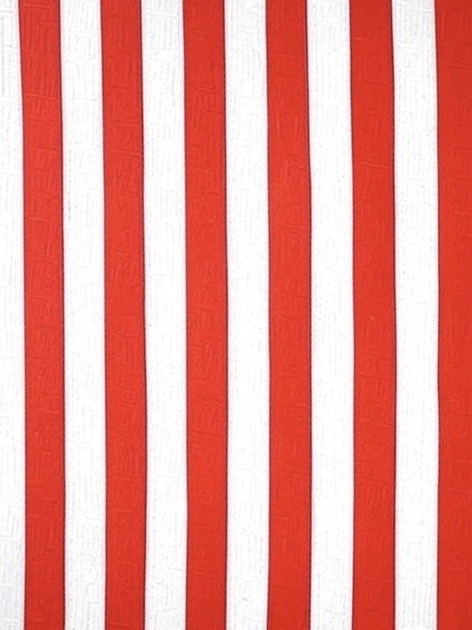
WHAT IS THE KISWA? | THE KISWA’S SIGNIFICANCE:
Explore the surprising history of the Kaaba’s Kiswa! Discover why its color changed from white & red to yellow & green before settling on black.
Learn about the history of the Kaaba’s KISWA (covering). Learn about the fabrics (Yemeni, Qubati, and brocade) and colours (white, red, yellow, and green) that were used before the introduction of black, as well as the reasons why practicality dictated Kiswa’s iconic black hue.
Hajar al-Aswad (Arabic: الحجر الأسود; “The Black Stone”), also spelt Hajr-e-Aswad, is a sacred rock encased with silver located in the southeastern corner of the Kaaba. This rock is not covered by the kiswa.
Table of Contents
1-The Prophet’s Era and the Rightly Guided Caliphs: Early Coverings of Kaaba
The Prophet Muhammad (PBUH) covered it with a white-and-red striped Yemeni cloth, and Abu Bakr Al-Siddiq, Umar ibn Al-Khattab, and Uthman ibn Affan covered it with white. Ibn Al-Zubayr covered it with red brocade.

2-Shifting Sands of Power: Umayyad and Abbasid Variations
During the Abbasid era, it was draped once with white and once in red, while the Seljuk Sultan covered it with yellow brocade. The Abbasid Caliph Al-Nassir changed the Kiswa’s colour to green and later to black brocade, and this colour has remained to the present day.
3-Why the Colours Changed: Practicality Over Symbolism
Dr. Fawaz Al-Dahas, director of the Centre for Makkah History, told Arab News: “The Kaaba was covered once in white, once in red, and once in black, and the choice of colour was based on the financial means in every era.”
4-The Fabrics of Reverence: Qubati, Yemeni, and Brocade
Qubati fabric was brought from Egypt and was one of the best types of fabric used to cover the Kaaba. The Yemeni Kiswa was also a quality cloth and was most famous at the time.
5-The Triumph of Black: Durability for a Global Sanctuary
On why the colours changed over the ages, Al-Dahas said that white was the brightest, but it was not durable. It often became torn, dirty, and impure as pilgrims touched it, and because it was impractical and short-lived, it was replaced with black-and-white brocade and shimal, which was used for covering Arab tents.
6-Preserving the Sacred Cloth: The Modern Practice of Lifting the Kiswa
He noted that the way humans perceived the Kiswa evolved after that, and it was replaced with a red brocade and qubati Egyptian cloth. Also, an antaa, which is a rug of leather, or a musouh, a collection of rough clothes, would be added to it.
“The Kiswa used to get changed from time to time whenever the fabric was available. This has been the case in the eras of the Rashidun Caliphate, the Umayyads, and the Abbasids,” he said.
With the continuation of the Umrah season, Al-Dahas said that the Kiswa was lifted to the middle of the Kaaba to preserve it and to prevent people from touching it.
CONCLUSION
Discover the background of the Kaaba’s covering. Learn about the fabrics (Yemeni, Qubati, and brocades) and colours (white, red, yellow, and green) used before black and why practicality dictated Kiswa’s iconic black hue.
Black was chosen at the end of the Abbasid era because it was durable and could withstand the touch of visitors, pilgrims, and people from diverse cultures.
Frequently Asked Questions (FAQ): The History & Colors of the Kaaba’s Kiswa
1-The Kiswa: What is it? | WHAT IS THE KISWA?
The sacred fabric known as the Kiswa is used to cover the Kaaba, the most sacred place in Islam, which is situated in Makkah. Every year, it is changed.
2-Is the Kiswa always black?
No. The Kiswa was created in a variety of colours, including white, red, yellow, and green, but it has been primarily black since the late Abbasid period (about the 13th century).
3-What colours were used before black, and by whom?
Prophet Muhammad (PBUH): Yemeni cloth with red and white stripes.
Uthman, Umar, and Abu Bakr: White cloth.
Ibn Al-Zubayr: Brocade in red.
Red and white draperies alternated during the Abbasid era.
Seljuk Sultan: Brocade in yellow.
Al-Nassir, the Abbasid Caliph: Green brocade at first, then black.
4-Which textiles were traditionally worn by the Kiswa?
Among the essential textiles were:
Yemeni Cloth: The Prophet PBUH, for example, utilised this fine, striped fabric in the early days.
Imported from Egypt, Qubati fabric is regarded as one of the finest varieties.
Rich, ornamental woven fabric, brocade, is employed in red, yellow, green, and eventually black.
Extra Layers: For protection, an “antaa” (leather rug) or “musouh” (rough fabric) was occasionally attached.
5-What caused the colours to shift so frequently over time?
The choice of colour was largely determined by the practical durability and financial resources available in each age, not by set symbolism, according to Dr. Fawaz Al-Dahas, Director of the Centre of Makkah History. The best fabrics that rulers and caliphs could afford or obtain were utilised.
6-For what reason was white cloth substituted?
Despite being intelligent and first favoured, white turned out to be unfeasible. Because pilgrims touched it frequently, it was prone to tearing, grime, and impurity. More sturdy fabrics and colours were adopted as a result of its lack of endurance.
7-Why did Black end up being selected?
At the end of the Abbasid era, black brocade was chosen for its durability and practicality. It was more resilient to frequent handling by the large number of pilgrims and tourists from throughout the globe, keeping its beauty longer than lighter hues.
8-During peak hours, how is the Kiswa safeguarded today?
The lower portion of the Kiswa is raised and gathered around the centre of the Kaaba at busy times like Umrah. This keeps the sizable pilgrimage groups from coming into contact with wear and damage.
General Disclaimer
“Some images on this blog are AI-generated. They are used for creative purposes and do not represent real photographs.”
